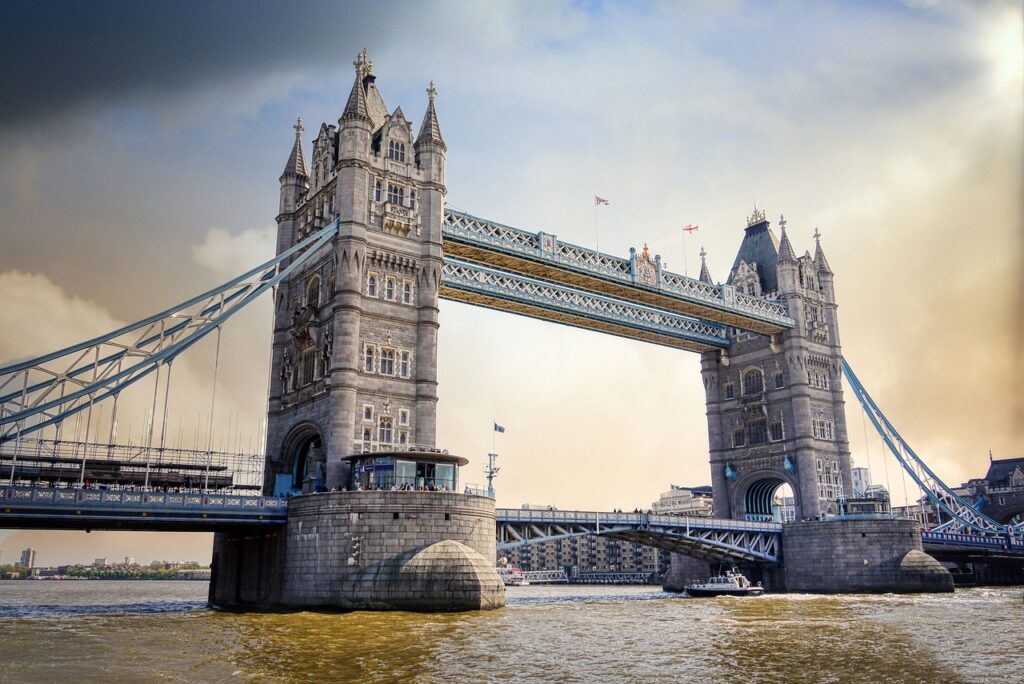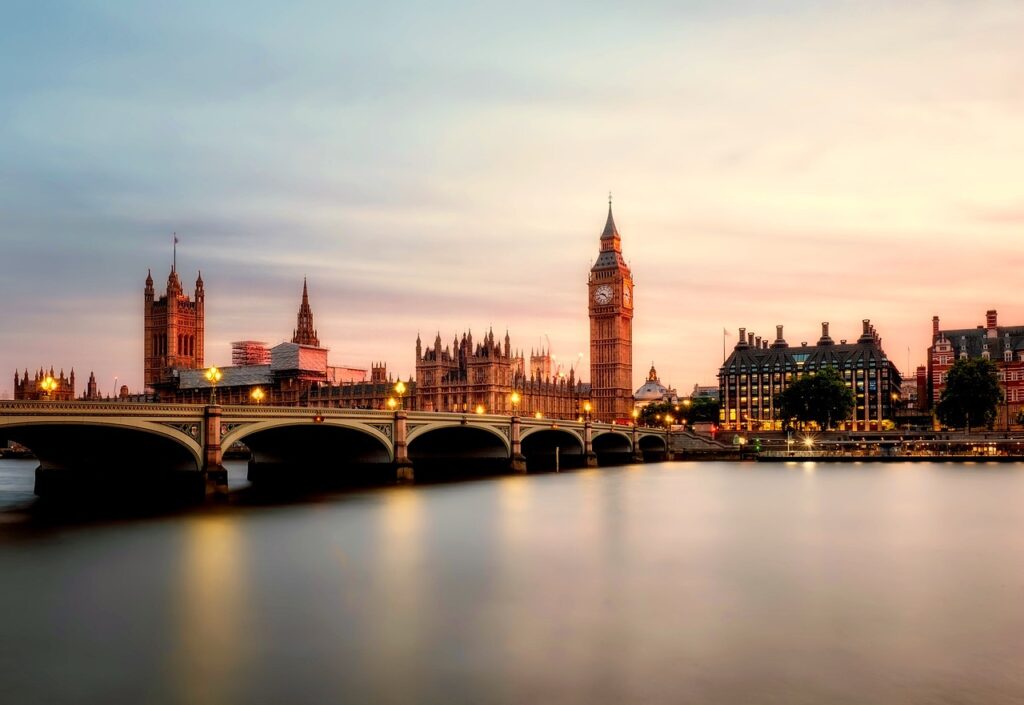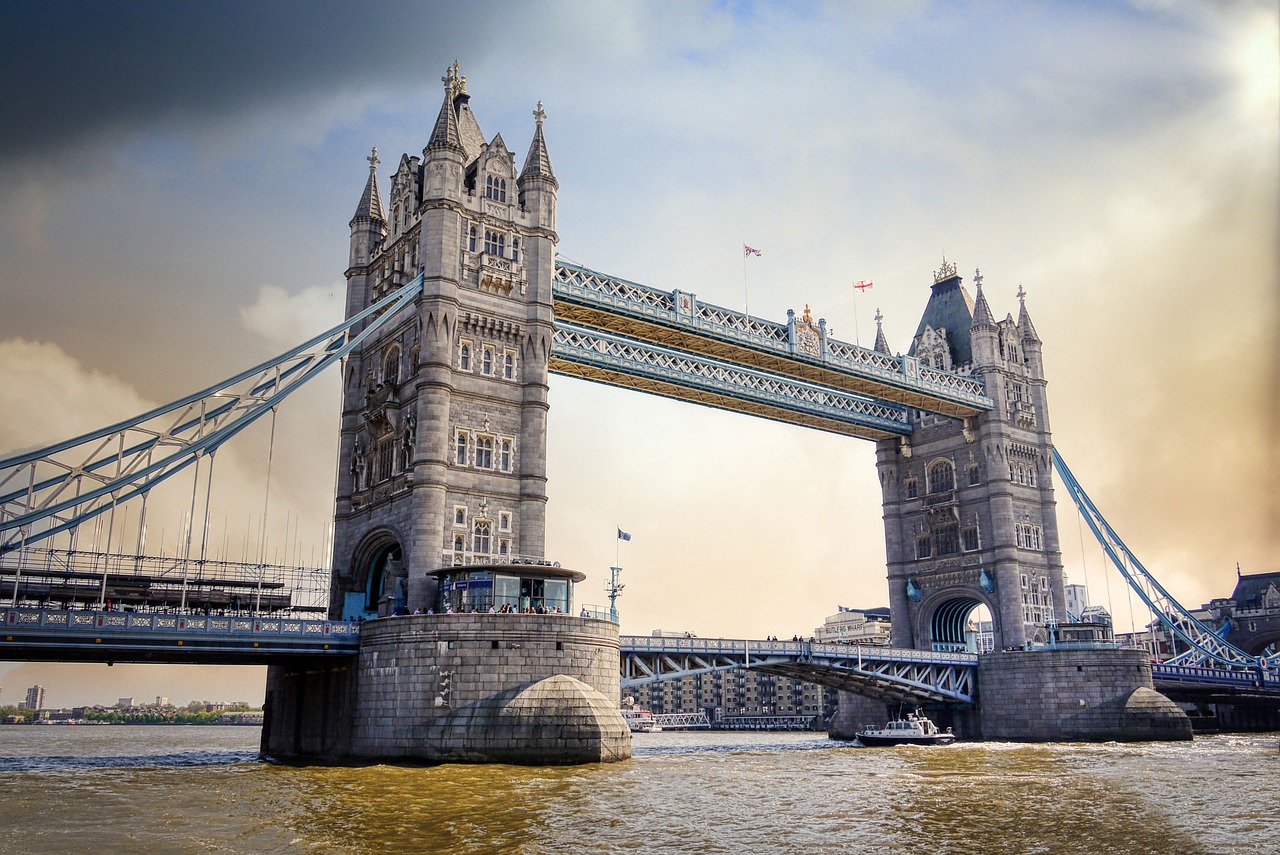London, a city that marries history with modernity, is best experienced from the banks of the River Thames. This majestic river, the lifeblood of the capital, is spanned by numerous bridges, each with its own story, charm, and architectural significance. For travelers looking to immerse themselves in the essence of London, a journey along the Thames, exploring its iconic bridges, offers an unparalleled glimpse into the city’s soul.
Whether you are a history buff, an architecture enthusiast, or simply a curious traveler, the bridges of the Thames provide a fascinating lens through which to view London. From the grandiose and historic Tower Bridge to the sleek and contemporary Millennium Bridge, these crossings not only connect different parts of the city but also connect us to London’s rich past and vibrant present.
Imagine starting your day with a leisurely stroll across Tower Bridge, taking in the panoramic views of the Tower of London and the Shard. You then wander along the Thames Path, perhaps stopping for a coffee at a riverside café before heading to the next bridge. Each step brings new vistas, new stories, and new experiences. Crossing the Millennium Bridge, you find yourself at the footsteps of St. Paul’s Cathedral, and a short walk away is the Tate Modern, where art lovers can lose themselves in world-class exhibitions.
This journey isn’t just about the destinations; it’s about the voyage itself. As you cross Westminster Bridge, you are greeted by the sight of Big Ben and the Houses of Parliament. On the other side of the river, the South Bank beckons with its vibrant cultural scene, from the National Theatre to the bustling street performers around the London Eye.
Traveling across these bridges allows you to see London from different angles—each perspective revealing the city’s layered history and its dynamic present. These bridges are more than just pathways; they are integral parts of London’s narrative, each contributing to the tapestry that makes this city so unique.
Join us as we embark on a journey through time and across the Thames, exploring the top bridges that define the river’s landscape. Whether you’re planning a trip to London or simply looking to learn more about its iconic structures, this guide will help you discover the stories, architecture, and significance of the bridges that span the River Thames. Get ready to walk in the footsteps of history and uncover the secrets of London’s bridges.

1. Tower Bridge
Perhaps the most iconic of all London bridges, Tower Bridge is a symbol of the city itself. Completed in 1894, this combined bascule and suspension bridge spans the Thames near the Tower of London. Its construction was necessitated by the need to allow river traffic to pass while maintaining a road link across the Thames.
Historical Significance:
Designed by Sir Horace Jones and engineered by Sir John Wolfe Barry, Tower Bridge was a marvel of its time. The two towers, connected by walkways at the upper level, house the machinery that raises the bascules (moveable sections) to allow ships to pass. This innovative design was crucial to maintaining the river’s vital commercial route while accommodating the increasing traffic on London’s streets.
Architectural Highlights:
Tower Bridge’s design combines elements of both Victorian Gothic and modern industrial architecture. The towers are clad in Cornish granite and Portland stone to protect the underlying steel structure and to harmonize with the nearby Tower of London. The bridge’s distinct blue and white color scheme was introduced during a 1977 repainting to celebrate Queen Elizabeth II’s Silver Jubilee.
Modern Usage:
Today, Tower Bridge remains fully operational, with its bascules being raised around 1,000 times a year. It also houses a museum in the towers, where visitors can learn about its construction and history and enjoy panoramic views of London from the walkways.
2. London Bridge
Often confused with Tower Bridge, London Bridge has a history that stretches back to Roman times. The current London Bridge, opened in 1973, is a simple, functional structure that replaced a 19th-century stone-arched bridge, which in turn replaced earlier versions dating back to the medieval period and beyond.
Historical Significance:
The original London Bridge was built by the Romans around AD 50. Over the centuries, it has seen many incarnations, including a medieval bridge with houses and shops on it, which stood for over 600 years. This bridge was a vital crossing and commercial hub but was often damaged by fires and natural decay.
Architectural Highlights:
The modern London Bridge, designed by architect Lord Holford, is a straightforward concrete and steel construction. While it lacks the ornate detailing of its predecessors, it stands as a testament to modern engineering and urban planning.
Modern Usage:
London Bridge remains a crucial arterial route, linking the City of London with Southwark. Its utilitarian design reflects its primary function as a thoroughfare for both pedestrians and vehicles.
3. Millennium Bridge
Opened in 2000, the Millennium Bridge is a pedestrian-only steel suspension bridge that connects St. Paul’s Cathedral on the north bank with the Tate Modern and Shakespeare’s Globe Theatre on the south bank. It is a symbol of modern London and a popular route for tourists and locals alike.
Historical Significance:
The Millennium Bridge was the first new bridge to be built over the Thames in central London for more than a century. It was designed by architects Foster and Partners and engineers Arup, with sculptor Anthony Caro contributing to the aesthetic design.
Architectural Highlights:
The bridge’s sleek, minimalist design features a shallow suspension system, giving it a distinctive flat profile. The deck of the bridge is supported by tensioned cables that create a visual lightness, emphasizing transparency and unobtrusiveness in the urban landscape.
Modern Usage:
Since its opening, the Millennium Bridge has become a pedestrian artery, offering stunning views of the Thames and landmarks like St. Paul’s Cathedral and Tate Modern. Despite its initial “wobbly” problem, which was quickly rectified, the bridge stands as a testament to modern design and engineering.
4. Westminster Bridge
Completed in 1862, Westminster Bridge is one of the oldest road bridges over the Thames. Its distinctive green color is said to be inspired by the leather seats in the House of Commons, which it faces.
Historical Significance:
The current bridge replaced an earlier 18th-century structure and was designed by Thomas Page. The Gothic detailing on the bridge harmonizes with the nearby Palace of Westminster, creating a cohesive visual experience.
Architectural Highlights:
Westminster Bridge features elegant cast-iron arches and Gothic embellishments, aligning with the Victorian Gothic revival style of the adjacent Houses of Parliament. The bridge is adorned with ornamental lamp posts and intricate ironwork.
Modern Usage:
As a key crossing in the heart of London, Westminster Bridge is heavily trafficked by vehicles and pedestrians. It provides one of the best vantage points for viewing the iconic landmarks of Big Ben, the London Eye, and the Houses of Parliament.
5. Blackfriars Bridge
The original Blackfriars Bridge, built in 1769, was replaced in 1869 with the current structure designed by Joseph Cubitt. It spans the river between the City of London and the district of Southwark.
Historical Significance:
Named after the Blackfriars Dominican priory, which once stood nearby, the bridge has always been a vital crossing for Londoners. The current bridge was part of significant improvements to London’s infrastructure during the 19th century.
Architectural Highlights:
Blackfriars Bridge features five wrought iron arches and is decorated with stone carvings of marine creatures, reflecting its connection to the river. It also boasts intricate detailing and an elegant profile.
Modern Usage:
In recent years, Blackfriars Bridge has become even more significant due to the addition of the Blackfriars Railway Bridge, which carries the Blackfriars station and features an impressive solar panel array, making it one of the world’s largest solar bridges.
6. Southwark Bridge
Completed in 1921, Southwark Bridge is often overlooked by tourists but plays an essential role in London’s infrastructure. This steel arch bridge connects Southwark and the City of London.
Historical Significance:
The current bridge replaced an earlier cast iron bridge from 1819. Designed by Ernest George and Basil Mott, it was part of a post-World War I initiative to improve London’s infrastructure.
Architectural Highlights:
Southwark Bridge is known for its clean, understated design, with its three main steel arches offering a sleek silhouette against the skyline. The bridge is painted in green and yellow, giving it a distinct yet harmonious look.
Modern Usage:
Southwark Bridge is primarily used by local traffic and provides an essential link between the financial district of the City and the cultural hubs of the South Bank.
7. Waterloo Bridge
Dubbed “the Ladies’ Bridge” because it was largely built by women during World War II, Waterloo Bridge is an essential part of London’s transport network. The current bridge, designed by Sir Giles Gilbert Scott, opened in 1945.
Historical Significance:
Named after the Battle of Waterloo, the original bridge opened in 1817 but was replaced due to structural concerns. The new bridge played a crucial role in the war effort, as women took on the construction jobs traditionally held by men.
Architectural Highlights:
Waterloo Bridge features sleek, modernist design with clean lines and functional elegance. Made of Portland stone, it reflects light beautifully, earning it the nickname “the bridge of light.”
Modern Usage:
Waterloo Bridge offers spectacular views of London, including St. Paul’s Cathedral, the South Bank, and the Houses of Parliament. It serves as a key route for vehicles and pedestrians and is celebrated for its pivotal role in both the city’s history and daily life.
8. Vauxhall Bridge
Vauxhall Bridge, opened in 1906, replaced a former bridge that had stood since 1816. It connects Vauxhall on the south bank with Pimlico on the north.
Historical Significance:
The original Vauxhall Bridge was one of the earliest iron bridges in London, but it deteriorated rapidly. The current bridge was designed by Sir Alexander Binnie and John Wolfe Barry, known for their contributions to London’s infrastructure.
Architectural Highlights:
Vauxhall Bridge is noted for its series of cast-iron sculptures of female figures representing the arts and sciences, including architecture, engineering, pottery, and agriculture. These sculptures, created by Frederick Pomeroy and Alfred Drury, add a unique artistic element to the bridge.
Modern Usage:
Today, Vauxhall Bridge is a vital link for traffic entering central London from the south-west. Its distinctive red and yellow paint scheme and decorative sculptures make it a notable feature of the Thames.
9. Chelsea Bridge
Chelsea Bridge, connecting Chelsea to Battersea, is an eye-catching suspension bridge opened in 1937. It replaced an earlier bridge from 1858.
Historical Significance:
The original Chelsea Bridge was part of a series of improvements aimed at easing congestion and improving transport links in London. The current bridge was part of a broader strategy to modernize London’s infrastructure in the 1930s.
Architectural Highlights:
Chelsea Bridge features Art Deco elements with its streamlined towers and clean lines. Its distinctive illuminations at night have made it a visual landmark along the Thames.
Modern Usage:
Chelsea Bridge is heavily used by commuters and provides a scenic crossing for pedestrians and cyclists heading to Battersea Park and Chelsea. Its night-time lighting adds to the aesthetic appeal of the riverfront.
10. Albert Bridge
Albert Bridge, one of London’s most picturesque bridges, connects Chelsea on the north bank with Battersea on the south bank. It was completed in 1873 and is renowned for its unique design and beauty.
Historical Significance:
Designed by Rowland Mason Ordish, Albert Bridge was initially constructed as a cable-stayed bridge. However, due to structural weaknesses, it was later reinforced with additional suspension chains in the late 19th and early 20th centuries. The bridge’s design aimed to accommodate the increasing road traffic while maintaining a delicate aesthetic.
Architectural Highlights:
Albert Bridge’s distinctive pastel color scheme and elegant Victorian architecture make it a favorite subject for photographers and artists. The bridge is lit by thousands of LED lights at night, giving it a fairy-tale appearance. Notably, it retains its original toll booth houses, which are now used for storage.
Modern Usage:
Albert Bridge is still operational today and serves as a vital connection between Chelsea and Battersea. It has weight restrictions to preserve its structure, limiting its use primarily to pedestrians and light vehicles. The bridge’s charming design and scenic views make it a popular crossing for locals and visitors alike.
11. Lambeth Bridge
Lambeth Bridge, opened in 1932, is a crucial crossing near the Palace of Westminster. It connects Lambeth on the south bank with Millbank on the north.
Historical Significance:
The current bridge replaced a suspension bridge built in 1862. The new design by engineers Sir George Humphreys and Sir Basil Mott was part of a broader effort to modernize London’s bridges in the early 20th century.
Architectural Highlights:
Lambeth Bridge is characterized by its red paint, which complements the nearby red leather benches of the House of Lords. The bridge’s five steel arches and ornamental details reflect the style of the period.
Modern Usage:
Lambeth Bridge is a key route for traffic traveling between Westminster and the south of London. Its proximity to key government buildings and landmarks makes it a significant thoroughfare.
12. Battersea Bridge
Battersea Bridge, completed in 1890, is one of the narrowest road bridges over the Thames. It connects Battersea on the south bank with Chelsea on the north.
Historical Significance:
The current bridge replaced a previous wooden structure that had become unsafe. Designed by Sir Joseph Bazalgette, the new bridge was constructed to handle increased traffic and improve safety.
Architectural Highlights:
Battersea Bridge features a traditional design with five cast-iron arches and granite piers. Its narrow width and the low clearance of its arches give it a distinctive profile.
Modern Usage:
Battersea Bridge remains an important crossing for local traffic, despite its narrow lanes. It is also used by pedestrians and cyclists, providing a link between two vibrant neighborhoods.
13. Putney Bridge
Putney Bridge, linking Putney on the south bank with Fulham on the north, is notable for its role in the annual Oxford and Cambridge Boat Race. The current bridge, opened in 1886, was designed by Sir Joseph Bazalgette.
Historical Significance:
The first bridge at this location was built in 1729. The current bridge, constructed to replace the old wooden one, was part of the Victorian era’s significant improvements to London’s infrastructure.
Architectural Highlights:
Putney Bridge is a stone-arch bridge with five arches. Its robust design and stone balustrades reflect the practical engineering solutions of the late 19th century.
Modern Usage:
Putney Bridge is heavily used by both vehicles and pedestrians. It is a key route for commuters and a popular spot for spectators during the annual boat race.
14. Hammersmith Bridge
Hammersmith Bridge, opened in 1887, is a suspension bridge that connects Hammersmith on the north bank with Barnes on the south. It was designed by Sir Joseph Bazalgette and is one of the most visually striking bridges over the Thames.
Historical Significance:
The current bridge replaced an earlier suspension bridge built in 1827. The new design incorporated advancements in engineering to accommodate increased traffic and improve structural integrity.
Architectural Highlights:
Hammersmith Bridge is noted for its ornate design, featuring decorative ironwork and intricate detailing. The green color scheme and suspension cables give it a distinctive appearance.
Modern Usage:
Due to structural concerns, Hammersmith Bridge has faced several closures and is currently undergoing extensive repairs. When open, it serves as a key pedestrian and cycle route, as well as a crucial connection for local traffic.
15. Kew Bridge
Kew Bridge, located in the west of London, connects Kew on the south bank with Brentford on the north. The current bridge, designed by John Wolfe-Barry, was opened in 1903.
Historical Significance:
The present Kew Bridge replaced an earlier stone bridge from 1759, which itself replaced an even earlier wooden structure. The new bridge was part of a wave of infrastructure improvements in the early 20th century.
Architectural Highlights:
Kew Bridge is a stone arch bridge with three main arches. It features classical design elements, including balustrades and ornamental piers, that harmonize with the surrounding landscape.
Modern Usage:
Kew Bridge is a vital crossing for traffic in west London. It provides access to the Royal Botanic Gardens at Kew, a UNESCO World Heritage Site, making it popular with tourists and locals alike.
16. Richmond Bridge
Richmond Bridge, completed in 1777, is the oldest surviving bridge over the Thames in London. It connects Richmond on the south bank with St. Margarets on the north.
Historical Significance:
Richmond Bridge was designed by James Paine and Kenton Couse and built to replace an earlier ferry service. Its construction reflected the growing importance of Richmond as a residential area for the wealthy.
Architectural Highlights:
The bridge is a beautiful example of Georgian architecture, featuring elegant stone arches and balustrades. It retains much of its original character and is a Grade I listed structure.
Modern Usage:
Richmond Bridge remains a key crossing for local traffic and pedestrians. Its picturesque setting and historical significance make it a popular destination for tourists and photographers.
17. Kingston Bridge
Kingston Bridge, which connects Kingston upon Thames on the south bank with Hampton Wick on the north, has been a crucial crossing since medieval times. The current bridge, opened in 1828 and widened in 1914, was designed by Edward Lapidge.
Historical Significance:
The bridge’s location has been a crossing point since at least the 13th century. The current structure was built to replace an earlier wooden bridge that had become inadequate for the increasing traffic.
Architectural Highlights:
Kingston Bridge features five elliptical arches and is constructed of stone and brick. Its design is both functional and aesthetically pleasing, blending with the historic surroundings of Kingston.
Modern Usage:
Kingston Bridge is an essential route for vehicles and pedestrians, serving as a major artery for traffic in southwest London. Its strategic location near Kingston town center makes it a vital part of the local infrastructure.
18. Chiswick Bridge
Chiswick Bridge, completed in 1933, is one of the newer bridges over the Thames. It connects Chiswick on the north bank with Mortlake on the south.
Historical Significance:
The bridge was built as part of the Great Chertsey Road project, aimed at improving road connections in west London. Its construction reflected the increasing importance of motor vehicle traffic in the early 20th century.
Architectural Highlights:
Chiswick Bridge is a reinforced concrete arch bridge with a simple yet elegant design. It features three main arches and is faced with Portland stone, giving it a clean, modern appearance.
Modern Usage:
Chiswick Bridge is an important route for vehicles, particularly for those heading towards central London from the southwest. It is also a popular spot for spectators during the annual Oxford and Cambridge Boat Race.

Addendum
Exploring the bridges of the River Thames is a journey that weaves through the rich tapestry of London’s history, culture, and architectural splendor. Each bridge, from the towering elegance of Tower Bridge to the understated charm of Kew Bridge, offers a unique vantage point from which to experience the city. For travelers, these crossings are not merely means to get from one place to another; they are destinations in their own right, brimming with stories and offering breathtaking views of London’s iconic skyline.
Immersive Experiences:
Walking across these bridges provides immersive experiences that go beyond the usual tourist trail. Imagine starting your day with the majestic view from Tower Bridge, where the juxtaposition of ancient and modern London unfolds before you. The bridge’s glass walkways offer a thrilling perspective, allowing you to look down at the river traffic below. Moving westward, the Millennium Bridge presents a sleek, modern contrast and leads you directly to cultural treasures like the Tate Modern and St. Paul’s Cathedral. This pedestrian-only bridge is perfect for a leisurely stroll, offering unimpeded views of the river and the city’s architectural landmarks.
Cultural and Historical Insights:
Each bridge is a chapter in London’s storied past. Westminster Bridge, with its striking Gothic detailing, connects you to the heart of British politics and heritage at the Palace of Westminster and Big Ben. As you cross this bridge, you can almost hear the echoes of historical debates and decisions that have shaped the nation. In contrast, the quiet elegance of Richmond Bridge takes you back to Georgian times, offering a serene escape and a glimpse into the past splendor of this royal borough.
Unique Photo Opportunities:
For photography enthusiasts, the Thames bridges offer endless opportunities to capture stunning images. The illuminated Albert Bridge at night, with its fairy-tale lights reflecting on the water, is a photographer’s dream. Similarly, the views from Waterloo Bridge, often called “the bridge of light” for its reflective Portland stone, provide some of the best panoramic vistas of London, encompassing landmarks like the London Eye, St. Paul’s Cathedral, and the Houses of Parliament.
A Local’s Perspective:
For those seeking to experience London like a local, the less touristy bridges such as Southwark Bridge and Vauxhall Bridge offer insights into the everyday life of the city. These bridges, while vital for their functionality, also reveal the rhythm of London’s daily commute, where the hustle and bustle of the city can be observed up close. Enjoy a coffee at a riverside café, watch the ebb and flow of river traffic, and take in the sight of locals going about their routines.
Architectural Wonders:
The diverse architectural styles of the Thames bridges are a testament to London’s ability to blend the old with the new seamlessly. From the ornate Victorian details of Hammersmith Bridge to the modern minimalism of the Millennium Bridge, each structure tells a story of engineering innovation and artistic expression. These bridges are not just functional structures but works of art that reflect the city’s evolving architectural tastes and technological advancements.
Practical Travel Tips:
For those planning to explore these bridges, here are a few practical tips to enhance your experience:
- Plan Your Route: Consider starting from the east with Tower Bridge and moving westward, allowing you to cover a variety of bridges and neighborhoods.
- Walking Tours: Many guided walking tours focus on the history and architecture of the Thames bridges, offering deeper insights and fascinating anecdotes.
- Photography: Early mornings and late afternoons provide the best lighting for photography, with fewer crowds and softer light.
- Public Transport: Utilize London’s extensive public transport system to move between different bridges efficiently. The Thames Clipper river buses are a scenic and convenient way to travel along the river.
- Seasonal Events: Check for any seasonal events or festivals happening along the Thames, as these can add an extra layer of excitement to your exploration.
Final Thoughts:
Exploring the bridges of the River Thames is a journey that encapsulates the essence of London—its history, innovation, beauty, and vibrant life. Each bridge you cross is a step through time, offering unique experiences and insights into the city’s past and present. Whether you’re a first-time visitor or a seasoned traveler, taking the time to discover these architectural marvels will undoubtedly enrich your understanding and appreciation of London. So, lace up your walking shoes, grab your camera, and set off on an adventure across the bridges of the Thames. Discover the stories, savor the views, and let the river guide you through the heart of one of the world’s most captivating cities.
Conclusion
The bridges of the River Thames are not just functional structures; they are an integral part of London’s historical and cultural landscape. Each bridge tells a story of the city’s development, from Roman times to the present day, reflecting the advancements in engineering, architecture, and urban planning.
Exploring these bridges offers a unique perspective on London, allowing one to appreciate the city’s rich heritage and dynamic evolution. From the iconic Tower Bridge to the elegant Richmond Bridge, each crossing provides a window into the past and a connection to the present.
As we navigate the bustling streets and tranquil pathways of London, these bridges remind us of the city’s resilience, innovation, and timeless beauty. Whether you are a resident or a visitor, taking the time to explore the bridges of the River Thames will enrich your understanding of this extraordinary metropolis and its enduring legacy.




